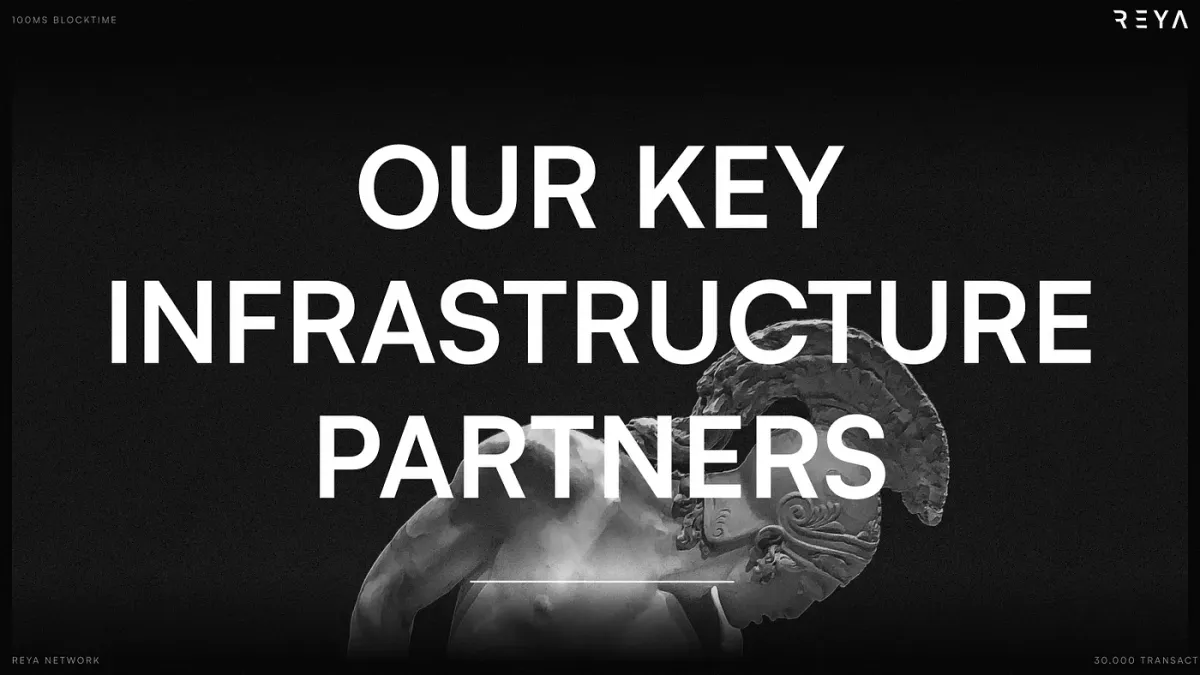Creating Reya Network: Embedding Financial Logic

In the previous article, we looked at the more technological ‘chain layer’. In this article, we look at the Protocol Layer, which embeds financial logic into the Network. Blending these two together is an important aspect that makes the Network so novel.
A recall of the structure of The Reya Network
Recall that the network’s various modular components can be broadly grouped in two layers:
- the chain layer, which provides the tools to fight the common flaws of generalizable chains when applied to trading. It accomplishes it while also guaranteeing complete security, improved user experience, minimal barriers for development by new teams, and a path towards decentralization.
- the protocol layer, which directly tackles the issues of vertically integrated DeFi applications by enriching this technological substrate with a new modular approach to the financial logic. It liberates the application layer, providing a way to build applications on top of the Network by deploying modular components to support trading, such as PnL settlements, margin requirements, liquidations.
Importantly, the Network doesn’t just include these two layers as two independent blocks, but rather includes them in a holistic system, blending technological and financial logics together to unlock new synergies.

In the previous article, we looked at the chain layer, and the partners that make it possible. In this one, we will look at the protocol layer, and the financial logic that it embed into the Network.

The Protocol Layer
The protocol layer directly tackles the issues of vertically integrated DeFi applications by breaking the chain into modular components to support trading, such as PnL settlements, margin requirements, liquidations. It directly provides the components which trading applications can deploy.
Financial applications are built monolithically, by vertically integrating the entire stack of financial logic. For example, right now each exchange builds the entire financial stack from the ground up, including the instrument logic, settlement and clearing layers, in addition to the instrument and exchange mechanism design. These layers are very different in character and domain knowledge, meaning that it will be difficult for a team to cover equally all components. This has important consequences. To start with, each user must trust that the entire monolithic stack — importantly, the clearing layer — is safe. But importantly, there is a total lack of interoperability between exchanges, resulting in a high liquidity fragmentation.
And because they are monolithic, financial primitives are also siloed. This blocks synergies that can arise from true modularity. For example, what happens when we build an autonomous clearing layer? And if we reimagine a stablecoin that can integrate with it?
The components of the Protocol Layer
This layer itself has multiple parts: financial layer, liquidity layer and governance. Let’s understand each of them in turn:
- Financial Component is the cornerstone layer that makes holding value, settling payments and trading in a capital efficient manner possible on Reya Network. Importantly, the architecture is open, allowing other exchanges to integrate into the network too.
It has two main modules:
- Derivatives Clearing Protocol providing the financial logic for calculating margin requirements, facilitating liquidations and enabling P&L attribution. The protocol features an advanced margin system, enabling cross-collateralisation of tokens different to the settlement token, along with full portfolio cross-margining. This means trading and providing liquidity is highly capital efficient. For example, ETH-BTC perp trading can be over 350% more capital efficient than on other exchanges.
- Stablecoin Protocol allows traders on Reya Network to settle trades in any governance-approved asset. However, the majority of markets will settle in rUSD, a stablecoin that is native to Reya Network, allowing for neutral settlement between users bridging from different chains. It will also enable the implementation of a payments clearing protocol to help facilitate settlement, as well as a savings protocol that will make it attractive to not just trade in rUSD, but to hold wealth in it. All of that ensures rUSD transcends from payments settlement into a long-term store of value.
2. Liquidity Component embeds a Passive-LP Pool into the Network. This leverages Reya Network’s ability to generate price indices to create contracts at an index. In the first instance external indices will be used, allowing traders to get exposure at a well defined index with reduced execution risk. The mechanism is built on the derivatives clearing logic, and also makes passive LPing on Reya Network highly capital-efficient. This mechanism will also act as the ultimate liquidity backstop of the system and boosts the liquidity of any exchange operating on Reya Network.
3. Governance Component indicates that Reya Network will decentralise, ensuring the network isn’t controlled by any single entity and providing transparency and trust through to the end users of the system. Trust and transparency also improves the composability of the network giving other exchanges confidence they can operate on the network, too. In turn this will help accelerate adoption of Reya Network and further deepen liquidity for end users.
The financial logic embedded in the Protocol is only the beginning. The present iteration of Reya Network is only the beginning, a paradigm shift that sets the stage for further development. The synergies already arising from blending technological and financial logic point to the existence of unforeseen ones in the future. Many natural questions arise right away: What does true tokenization of derivatives exposure look like? What if the entire network becomes identified with the collateral pool, unbounding liquidity? What does a governance system look like that intertwines stakeholders to the same extent that the foundations themselves are integrated?


